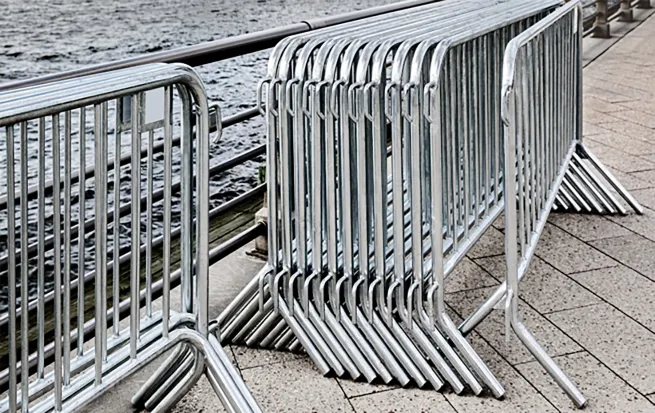
- Afrikaans
- Albanian
- Arabic
- Armenian
- Azerbaijani
- Basque
- Belarusian
- Bengali
- Bosnian
- Bulgarian
- Croatian
- Czech
- Danish
- Dutch
- English
- Esperanto
- Estonian
- Finnish
- French
- Galician
- Georgian
- German
- Greek
- hawaiian
- Hindi
- Hungarian
- Indonesian
- irish
- Italian
- Lao
- Latvian
- Lithuanian
- Luxembourgish
- Macedonian
- Maltese
- Myanmar
- Norwegian
- Polish
- Portuguese
- Romanian
- Russian
- Serbian
- Slovak
- Somali
- Spanish
- Swedish
- Thai
- Turkish
- Turkmen
- Vietnamese
GET A QUOTE
Mar . 04, 2025 00:43 Back to list
splicing welded wire fence
Splicing a welded wire fence is a task that tests both skill and patience. It's a crucial process in maintaining the integrity and effectiveness of a fence system that serves myriad purposes, from outlining property boundaries to securing livestock. The following guide elaborates on everything one needs to know about splicing welded wire fence, enriched with practical insights and professional tips aimed at ensuring optimal performance and durability.
5. Creating Overlaps Lay the new wire parallel to the existing wire ends. Ensure there's at least a 4-inch overlap on each end. This overlap will be the section where the wires merge into one robust piece. 6. Securing the Splice Using the pliers, start twisting the new wire around the old wire, maintaining even pressure and spacing. This secure twist prevents the splice from unraveling under tension or the weight of external elements. 7. Testing the Tension Once the splice is complete, assess the tension by gently pulling on the fence. Properly spliced wires should hold under moderate force without slipping. Professional Tips for Longevity - Wire Gauge Consistency Ensure that the gauge of the splicing wire matches or exceeds the existing wire’s gauge. Using a thinner wire compromises the fence's overall strength. - Rust Prevention Post-splicing, inspect the surrounding fence area for signs of rust. Regularly painting or treating the fence with anti-rust solutions prolongs its life. - Regular Inspection Frequent inspections and maintenance go a long way in preventing severe damage. Catching issues early can minimize the extent of necessary repairs. The Value of Expertise Expertise in fence splicing comes with practice and meticulous attention to detail. Professional fence contractors often share that the success of a new splice lies in the ability to blend it seamlessly with the original fencing. This practice not only restores functionality but also maintains an aesthetic consistency, which is particularly crucial in residential settings. Ensuring Trust and Authority Having a well-spliced welded wire fence is not merely about reacting to damage but ensuring proactive care. Expert communities, like those on agricultural and homesteading forums, affirm that the more attention paid to preventive measures, the less frequently significant repairs are needed. Such a practice enhances trust in the fencing’s ability to secure property and protect livestock effectively. In conclusion, the art and skill of splicing welded wire fencing are as much about understanding the materials and methods as they are about foresight and maintenance. By adhering to these expert guidelines, one can ensure that their fence remains a sturdy, reliable boundary for years to come.


5. Creating Overlaps Lay the new wire parallel to the existing wire ends. Ensure there's at least a 4-inch overlap on each end. This overlap will be the section where the wires merge into one robust piece. 6. Securing the Splice Using the pliers, start twisting the new wire around the old wire, maintaining even pressure and spacing. This secure twist prevents the splice from unraveling under tension or the weight of external elements. 7. Testing the Tension Once the splice is complete, assess the tension by gently pulling on the fence. Properly spliced wires should hold under moderate force without slipping. Professional Tips for Longevity - Wire Gauge Consistency Ensure that the gauge of the splicing wire matches or exceeds the existing wire’s gauge. Using a thinner wire compromises the fence's overall strength. - Rust Prevention Post-splicing, inspect the surrounding fence area for signs of rust. Regularly painting or treating the fence with anti-rust solutions prolongs its life. - Regular Inspection Frequent inspections and maintenance go a long way in preventing severe damage. Catching issues early can minimize the extent of necessary repairs. The Value of Expertise Expertise in fence splicing comes with practice and meticulous attention to detail. Professional fence contractors often share that the success of a new splice lies in the ability to blend it seamlessly with the original fencing. This practice not only restores functionality but also maintains an aesthetic consistency, which is particularly crucial in residential settings. Ensuring Trust and Authority Having a well-spliced welded wire fence is not merely about reacting to damage but ensuring proactive care. Expert communities, like those on agricultural and homesteading forums, affirm that the more attention paid to preventive measures, the less frequently significant repairs are needed. Such a practice enhances trust in the fencing’s ability to secure property and protect livestock effectively. In conclusion, the art and skill of splicing welded wire fencing are as much about understanding the materials and methods as they are about foresight and maintenance. By adhering to these expert guidelines, one can ensure that their fence remains a sturdy, reliable boundary for years to come.
Latest News
-
The Vital Role of Wire Mesh in Construction
NewsJul.01,2025
-
The Essential Benefits of Welded Wire Mesh
NewsJul.01,2025
-
Secure Your Property with Field Farm Fence
NewsJul.01,2025
-
Expert Chain Link Fence Installation
NewsJul.01,2025
-
Discover the Versatility of Hexagonal Wire Mesh
NewsJul.01,2025
-
Barbed Wire
NewsJul.01,2025
Related Products









